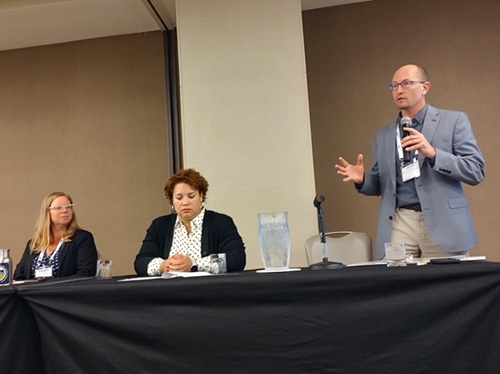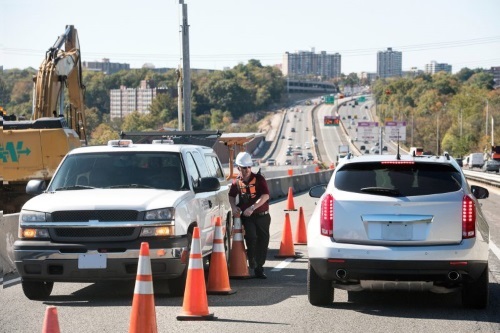The Virginia Tech Transportation Institute initiated a three-year study of “dynamic scenarios” involving automated driving systems on April 24 that will examine in part at how self-driving vehicles communicate with roadway and other related physical infrastructure.
[Above photo via the VTTI.]
The study – funded by a $7.5 million grant from the U.S. Department of Transportation, one of two competitive federal awards that VTTI received in September 2019 – will also involve vehicle manufactures, infrastructure owner-operators, public safety communities, and the Virginia Department of Transportation.
“Our partnership in researching automated vehicles and their interaction with work zones and incident scenes is crucial in finding ways to reduce injuries and fatalities of those who work in and respond to events on our roadways,” said Cathy McGhee, Virginia’s Director of Transportation Research and Innovation, in a statement.
“Law enforcement officers, firefighters, emergency medical technicians, safety service patrollers, and others put their lives on the line every day to protect the public, and we must leverage this technology in ways that enhances their safety,” she added.

However, the “dynamic nature” of public safety scenarios could prove challenging for automated driving systems, explained Mike Mollenhauer, director of VTTI’s Center for Technology Implementation, who is one of the leaders of this study.
“Let’s say a car with no front-seat occupants approaches a freeway crash that is blocking lanes, and a police officer is directing traffic,” he said. “How does the officer direct the car around the crash and then know that the vehicle will respond appropriately? This is just one of many scenarios for which industry, government, and academia must collaboratively provide solutions in order to enable public trust in this technology.”
To figure that out, Mollenhauer said his research team plans to identify solutions and build highly automated “Level 4” reference vehicles along with the connected infrastructure needed to support them. In the last phase of the project, they intend to hold three demonstrations to showcase the technology safely navigating challenging scenarios on the I-95 Express Lanes outside of Washington, D.C.

Following the on-road demonstrations, VTTI noted that the Global Center for Automotive Performance will then process collected vehicle data to create three-dimensional simulations of those driving scenarios – simulations that could help inform machine learning algorithms, industry and national standards, plus educational materials for public service providers.
This project is being launched on the heels of new rules proposed by the National Highway Traffic Safety Administration in March regarding safety testing of autonomous vehicles.
“With more than 90 percent of serious crashes caused by driver error, it’s vital that we remove unnecessary barriers to technology that could help save lives,” noted James Owens, NHTSA’s acting administrator, in a statement. “We do not want regulations enacted long before the development of automated technologies to present an unintended and unnecessary barrier against innovation and improved highway safety.”
 Top Stories
Top Stories
Identifying Ways State DOTs Can Build Safety Partnerships
October 31, 2025 Top Stories
Top Stories

